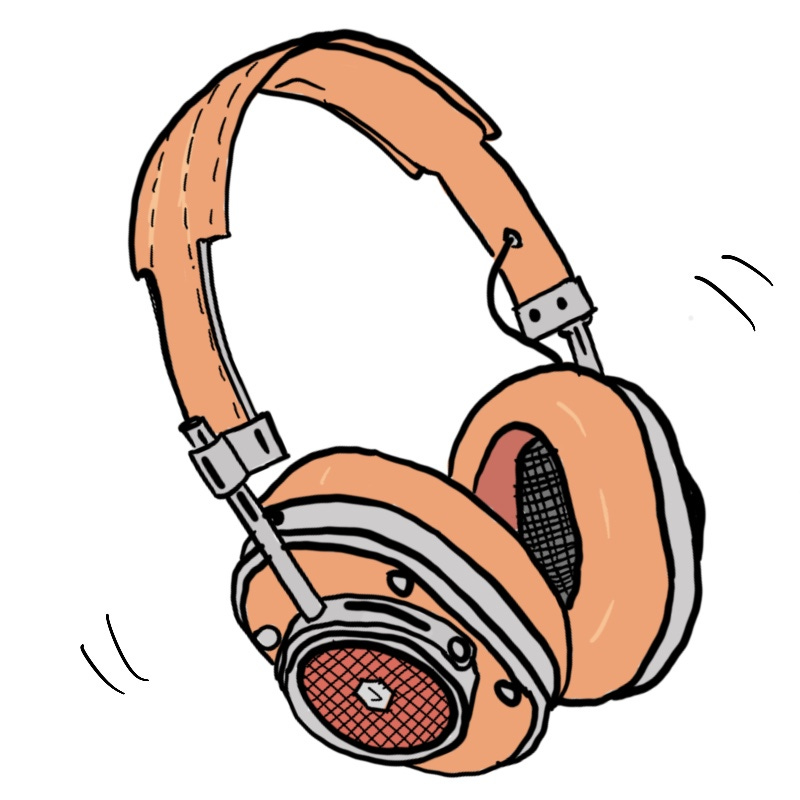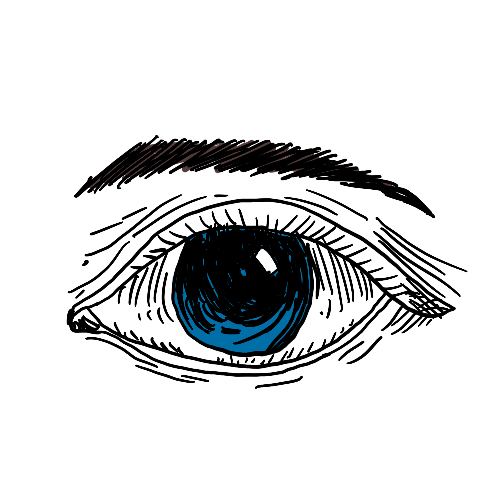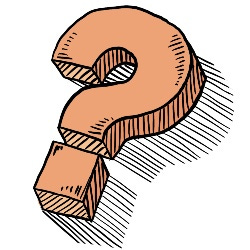Don’t like reading? Allow me to read it to you 👈
“Very dangerous art can be made with a pencil.”
- Laurie Anderson, interview with Christian Lund
“Dangerous? Don’t make me laugh. Art’s not dangerous—it’s useless! Pointless, pious, and petty, it hangs itself in our lives and minds like some intellectually superior playground bully with an IQ it assures is very high.
“It’s elitist.
“‘You can’t afford me!’ it says, singsong-ing its bullshit from behind a velvet rope on some Bright White wall in a gallery, the sound of an auctioneer’s gavel thwacking from a far-off room. We feel a waft of air as rich people wave their Sotheby’s paddles as applause.
“‘You don’t understand me,’ it taunts from the shelves of some hoity-toity library, flipping to dense, impenetrable paragraphs that make us not even touch at its spine due to the shiver running down ours.”
OK, Janeen. I get it.
“It says: ‘I make you uncomfortable and you don’t why.’ Then it plucks at anxiety’s harp at minute 87 of that thriller you got sucked into. The music swells. Your body tenses up its gooseflesh.
“It’s not dangerous. It’s irritating.”
I get what you’re saying. But let me ask you this:
If it’s not dangerous, why do they want to ban so many books? Why do they put ratings on films to restrict who can and cannot watch them? Why do paintings get flagged for nudity on social platforms? Why do songs become things people march to?
Art is dangerous. It’s dangerous because it can change how people think and that can change the world. The status quo gets it knickers in a knot about that.
“That’s just dumb Big Art-backed propaganda. I mean, how many people have been hurt by art?”
Physically? More than you think. (Blame the metal sculptures. Some are quite sharp). But mentally? Well, harm is in the eye of the eye-socket. Which leads to the brain. But hey, you brought up propaganda. Let me ask you a follow-up question:
Can propaganda be Art? Can Art be propaganda? Is propaganda just a cruel bastardization of the noble dream of Art? Of a tool of expression? Do propagandists view Art as just another lever to pull—a frosting on a shitty cake that’ll make the hoopleheads hold out a plate? Who doesn’t love cake day?! Do people who make propaganda mimic the mechanisms of Art just to turn cogs in their manipulation machine?
Propaganda can make evil things look good.
Propaganda can make good things look evil.
Propaganda is a lie held in a gorgeous frame. Beginning and end. A slogan written in a notebook and printed on a t-shirt or wheat-pasted onto a wall. Chanted at a rally by flushed and ruddy faces.
But is it Art?
“Art makes me agitated.”
At times, yes, it is an agitator. A figure with a brick.
But propaganda using Art as a tool of delivery aside, Art is dangerous because as a tool of expression—of the emotion of the times and moment in history—it allows people to share how they feel, verbally and visually. Sharing how they view the world and what they are seeing. Art is how they parse it.
And when other people view that Art, that helps them to express and reflect and react. And that’s what’s dangerous. Art makes people think.
Art is expression—not just of the artist, but of the times.
“I don’t think propaganda is Art. Propaganda is not expression. It’s manipulation.”
You don’t think Art manipulates? Plato would like a word.
“What’s Plato got to do with it? You and your obsession with the Greeks. Ugh!”
Plato thought the arts were dangerous. He was of course talking about poets and poetry (and probably a bit of drama) because the Greeks didn’t’ really have the concept of the Arts like we do. But…
“Weeds. You are going there.”
According to Plato’s theory, which I’m going to apply to everything art-based (like most people do when they talk about this theory), Art is an imitation of life, therefore not real. It is UNTRUE. Art is a lie. And that’s what makes it dangerous.
Lies hurt the public. As a lie, Art can affect your moral point of view. Art—this altered reality, this imitation of life, this naughty poetry that gives people a distorted view of truth—has the power to destabilize society making it a threat to the common good.
“You go, Karen Plato!”
Exactly. Art steps too far off the path of reality therefore needs a “Danger Cliff” sign or else that poetry that’s so beguiling and siren-ish will walk you right off the edge of it.
“I’ve always said poetry is dangerous. Poets are a menace. Poets and songwriters. Up to no good. Giving people FEELINGS they don’t know what to do with.”
You’re getting it now. Art itself IS it the lie—and that’s why Plato thought it was dangerous. Like the social media of his time, it presented an altered ‘fake’ view of reality that did not show the full picture.
But I would ask Plato this: is it a lie simply because it’s not reality? The poet expressing a lost love. The painter expressing a violent scene depicting the savagery of humanity. The filmmaker shooting a dark and bleak street. Pull back from the frame and we see the ruse, but does that make the moment captured in that frame less true?
Lies are dangerous. So is Art poetic propaganda?
“So many questions. Propaganda is not Art. It’s advertising.”
[SIGHS]
Sure. But even Art is advertising something. A scene we can’t get to. The athleticism of youth. Bodies unlike our own. An expression we cannot put into words. The way things look from a certain angle. The way things could or ought to be in a perfect world.
Art advertises our selves.
“So, is advertising just art with an agenda? To fire you up. To make you feel something. To appreciate. To buy. Art is commerce. And that’s dangerous, right?”
Everything has an agenda.
“Art pushes the agenda of the artist.”
That is true, too. Even me. Talking to you—myself—about this. I have an agenda. I want you to make art.
But before I get to that, when it comes to the artist, is ‘agenda’ just compulsion by another name? Is agenda Purpose? Or Mission? Or Impulse?
“Agenda is an evil-leaning word. It has connotations.”
But is having an agenda to make you feel something—anything—a poisoned purpose? Art’s agenda is to appreciate the beauty in the world. To question a premise. To question everything and our view of it. Is it wrong to feel compelled after an event to get up off our arses and applaud a sentiment, an expression, a moment of non-reality made to feel real as an expression of a reality? Is it wrong to feel inspired to make something ourselves?
Does Art have a noble agenda?
“Pft! Noble-ize it all you want. Romanticize it, too. Put airs on it. Make all kinds of arguments for the value of art to civilization and humanity and life. Position it proudly in your heart and mind and rub it into your dried emotions like some kind of healing spiritual foundation. Give Art this power and gravitas and put people up on pedestals, but don’t come to me crying when they sell out.
“Art is not dangerous. Art is commerce. It’s transactional.”
Ok, crusader. Trust me—no one thinks painters don’t want to sell paintings. No one thinks writers don’t want earn money for their words, or musicians don’t want people to buy their records or go to their concerts.
Yes. Art is beautiful and makes us feel good, and you’re right—it is a business. But if you want to be real, let’s be real.
There are things outside your life that you cannot control. You cannot control how much your electric bill will be. You cannot control the tides. You cannot control inflation. You cannot control how other people think. The world is out of control. You cannot control it.
What you can control is how you react and how you express yourself. And sometimes, when it feels like someone else is driving the car of your life—when you feel you have lost control—sometimes expressing yourself through your art is all you have. Money or no money, your ability to make art is one thing you have power over and that is its own currency.
The people who control the things outside of your control are scared by people who take control of their own expression. Who think. Who are curious. Who read. Who make art that makes other people think. And get curious. And read.
And express.
And that’s why Art is dangerous.
Because it can be made by anyone.
By anyone with a message.
By anyone with hope.
By anyone with purpose.
By me.
And by you.
Anyone.
“Can art start a revolution?”
Art can fuel the vibe of a revolution.
“Can Art end a war?”
It can play a part.
“You’re talking about Protest Art.”
If you want to call it that, sure. But it doesn’t have to be a protest to be dangerous. It can be therapy. Self care. Salvation. A comfort. It can be your outlet of expression in troubling times. It can help society gain clarity as to the space it occupies. I guess what I’m saying is that Art is giant and complex and means a lot—A LOT—of different things to a lot of different people.
Art is pretentious.
Art is offensive.
Art makes us uncomfortable.
Art is challenging.
Art makes us question our taste.
Art makes us question our neighbors.
Art is a giant wank.
Art is a reflection.
Art is a truth ray.
Art is a lie.
Art is medicine.
Art is what you make it.
Art is protest.
Art is an act of resistance (just like joy).
Art is made by people.
Art is dangerous.
The ideas. The artists. The poets.
“People keep saying the best art comes in troubled times. Why do we have to go through the troubled times to get it? I feel like shit. This sucks.”
Like I said, control. When you feel like you’ve lost control, when you feel like the world has gone mad and you’re caught up in the net of it, close your aperture to bring into view what you can control.
Control your mind. Control your voice. Control your expression.
This is what you have in troubled times. If you feel like shit—anxious, troubled, scared—look to Art.
Art that cuts.
Art that heals.
Art that bites.
Art that kisses.
Art that sneers and blinds and turns the world upside down.
Art that expresses love to counterbalance all.
Art that…just is. That aims for nothing but the act of coming from you.
You know?
Art.
“Where do we go from here?”
I don’t have an answer. But you know what I do have?
A pencil.
Watch the Video about the themes in this post 👇
This week’s amends…
There’s a Toni Morrison quote doing the rounds. It’s taken from an essay she wrote after Bush (the son) got elected called: “No Place for Self-Pity, No Room for Fear,” included in the 150th anniversary issue of The Nation. This is the opening of the essay.
“I am staring out of the window in an extremely dark mood, feeling helpless. Then a friend, a fellow artist, calls to wish me happy holidays. He asks, “How are you?” And instead of “Oh, fine — and you?”, I blurt out the truth: “Not well. Not only am I depressed, I can’t seem to work, to write; it’s as though I am paralyzed, unable to write anything more in the novel I’ve begun. I’ve never felt this way before, but the election…” I am about to explain with further detail when he interrupts, shouting: “No! No, no, no! This is precisely the time when artists go to work — not when everything is fine, but in times of dread. That’s our job!”
That feels so real to me. And this is the quote everyone is sharing around:
“This is precisely the time when artists go to work. There is no time for despair, no place for self-pity, no need for silence, no room for fear. We speak, we write, we do language. That is how civilizations heal.”
On Rotation: “Imitation of Life” by R.E.M.
(My absolute favorite song from this album)
Bonus track: “Let X = X” by Laurie Anderson
Could I have put “O Superman” here? For sure. But everyone knows that. “Let X=X” is not even the second most played on that record. I like it.
For more Laurie goodness, check out her interview from two years back on WTF with Marc Maron. Episode description:
Laurie Anderson says she never made art to express herself, she didn’t care about having a “style,” and she sure didn’t think about building a “brand.” Laurie and Marc talk about her time in New York City as part of a booming art scene, her days hanging with Andy Kaufman, and her many musical collaborations. They also discuss Laurie’s role as the steward of Lou Reed’s legacy, including the new book she helped edit of Lou’s writing on Tai Chi.
A reminder that all songs featured in this newsletter over the years are added to the giant mega super playlist of magnificents and magnificence which you can access with an effortless depress of this button. 👇
The Laurie Anderson interview with the quote about the pencil was taken from an interview by Christian Lund at the Louisiana Museum of Modern Art, Denmark in May 2016. She says a lot of lovely stuff in these two vids from Louisiana Channel.
“I’m an artist because I want to be free.”
“Curators do it, you know? […] ‘This is our theme so stay in the theme.’ You're like, ‘Really? Okay, how about if I stay in my theme.’ Let your own interest and your own obsession rule that, and don't you know, don't be caught in that trap of definition. Because it's a it's a corporate tool it's like I realized that it's all about sales you know it's not to help you make your work it is to help other people sell your work.”
Via Femalepoetssociety Instagram
Well. You don’t see that every day.
Shameless Podcast Plug
Listen to audio versions of early issues of The Stream on my podcast, Field of Streams, available on 👉 all major podcasting platforms 👈
Here’s Apple











Fabulous article. Thanks.